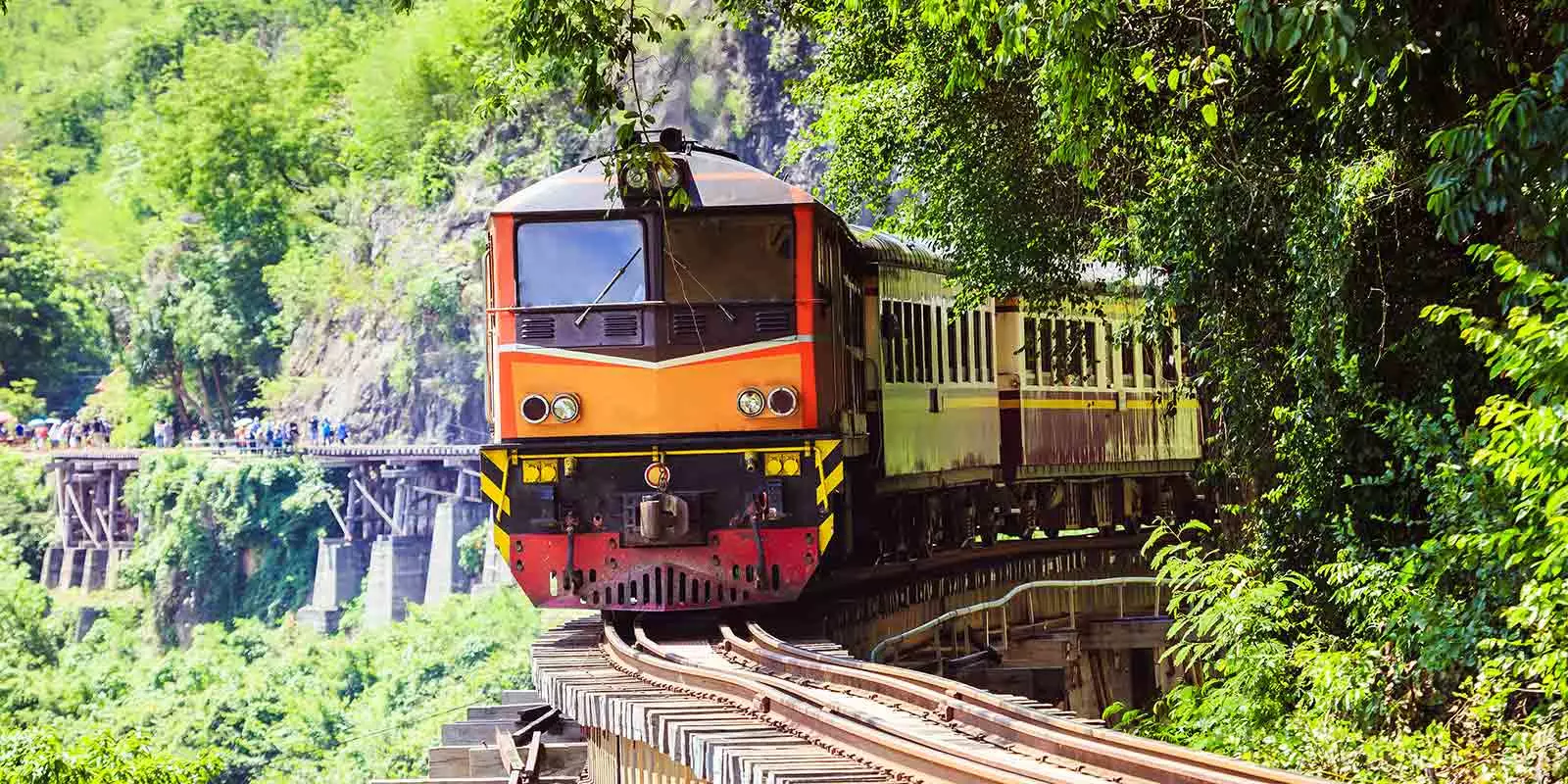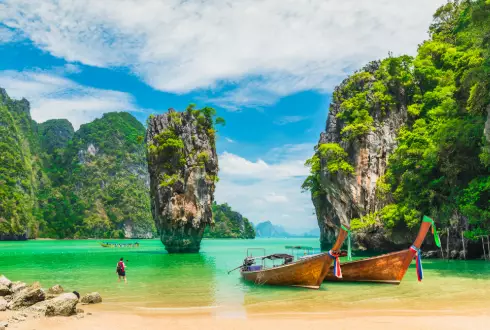Neighbouring countries with a shared border, Malaysia and Thailand may be wholly different, but both have a culture, cuisine and incredible landscapes that need to be explored.
Malaysia has a rich, blended culture and fascinating heritage thanks to the fact it was a port of call on the key trade route between China and India for centuries. This is something that didn’t escape the notice of the Dutch, Portuguese and British, each of whom sort to use its position to strengthen their empires. The influence of all of these different cultures, plus those of the indigenous people, can easily be found today among the natural beauty, dynamic cities and diversity of Peninsular Malaysia in one unique and fascinating melting pot.
Thailand, once Siam, is a country that managed to avoid being colonised, so while in more recent years the influence of the West has started to take effect, its own age-old culture remains integral and immensely rich but accessible for those who wish to explore it. Behind the neon, high-rise, modern cities remain the quaint fishing villages and peaceful Buddhist temples where the real day to day life in Thailand is lived out. Add in incredible beaches and islands, delicious food, mountains, hill tribes, jungle, timeless ruins and so much more and it’s easy to see why Thailand is Asia’s top travel destination.
Fully Inclusive of Tour & Flights

Safe, comfortable, and covering much of the country, Malaysia’s railways are an easy and relaxing way to get around the country. Much of the network is over a century old but has been mostly upgraded to double track electric rail, allowing for modern, higher-speed trains that can travel up to 160 kilometres an hour. ETS trains are the inter-city trains that run on the upgraded lines.
Onboard, in a standard class carriage you’ll find air-conditioning, comfy seats arranged in a 2+2 formation, power sockets and LCD TVs. All ETS trains have a café car from which you can purchase drinks and snacks. For shorter journeys, you’re likely to use the KTM Komuter trains, which you’ll find very similar to UK short distance trains with comfy seats but limited other facilities.

Thailand boasts an extensive intercity rail system that is efficient, economical, safe and comfortable. In fact, it can take you into off-the-beaten-track corners with ease, as well as into the highlands of the north, to the beaches of the south and all the natural beauty inbetween. These journeys give a perfect window into Thailand’s range of incredible landscapes, as the trains pass through plantations, rice paddies, forest and much more.
There are four different types of train here, categorised by speed and facilities: Ordinary trains are for local journeys and stop a lot and don’t have air-conditioning. Rapid trains stop at main stations and select smaller ones and have slightly more comfortable seating. Express trains are faster and more expensive than rapid trains and can be air-conditioned or not air-conditioned. Special Express trains are the fastest option, stopping only at main stations – we use Special Express No. 40 in the Thailand portion of our Singapore to Bangkok by rail tour. Travelling up to 120 kilometres an hour, it has air-conditioning, reclining seats and tray tables; a meal is also included in the ticket price.

Opened in 1923, this two-kilometre-long funicular railway travels from Air Itam, a suburb of George Town, Penang, up to the summit of Penang Hill. It was built by the British to allow people to enjoy the cooler climes of the hilltop more easily. It is single track with a passing loop and features the steepest tunnel in the world.
The journey can take anywhere between five and 20 minutes, depending on the number of request stops en route. Today’s train is modern with big windows to allow you to enjoy the views, but you can see original coaches at the stations. At the top there is a viewing platform called ‘Skywalk’, a café, museum, and food court.
You can ride the funicular on our Singapore to Bangkok by Rail tour.

The Thai-Burma Railway, which became known as the Death Railway due to its infamous WWII Prisoner of War history, is both an incredibly poignant and scenic rail journey. Although the line actually runs all the way to Bangkok, 2.5 hours away, the 40-minute ride between Namtok and Tam Krasae that crosses the famous Bridge of the River Kwai is the best section of the line to ride, and the part that we ride on our Singapore to Bangkok by Rail tour.
All carriages are third class, with fans, opening windows and seating that is comfortable enough for a short ride. Running alongside the Kwai River, clinging to the jungle swathed cliffs, the picturesque setting does offset some of the sombreness of the railway’s story (which you will learn more about at the Memorial Museum and Hellfire Pass).

